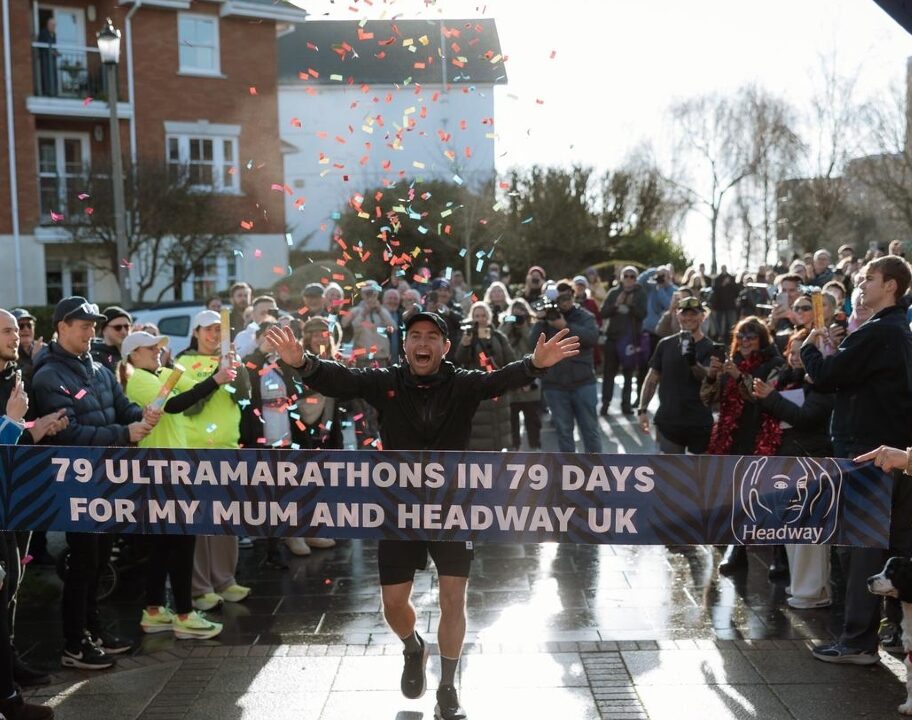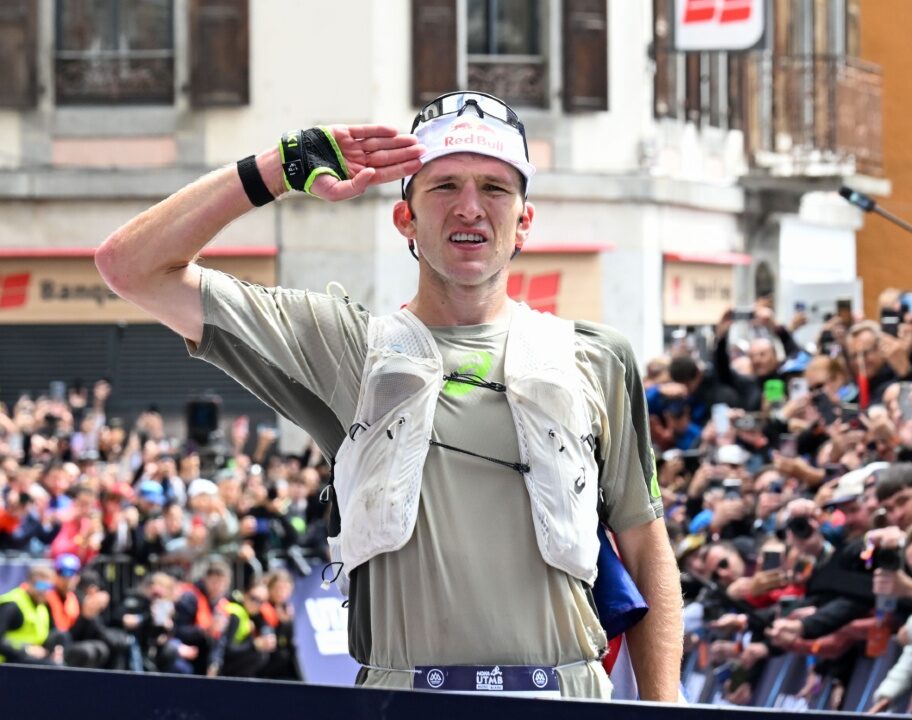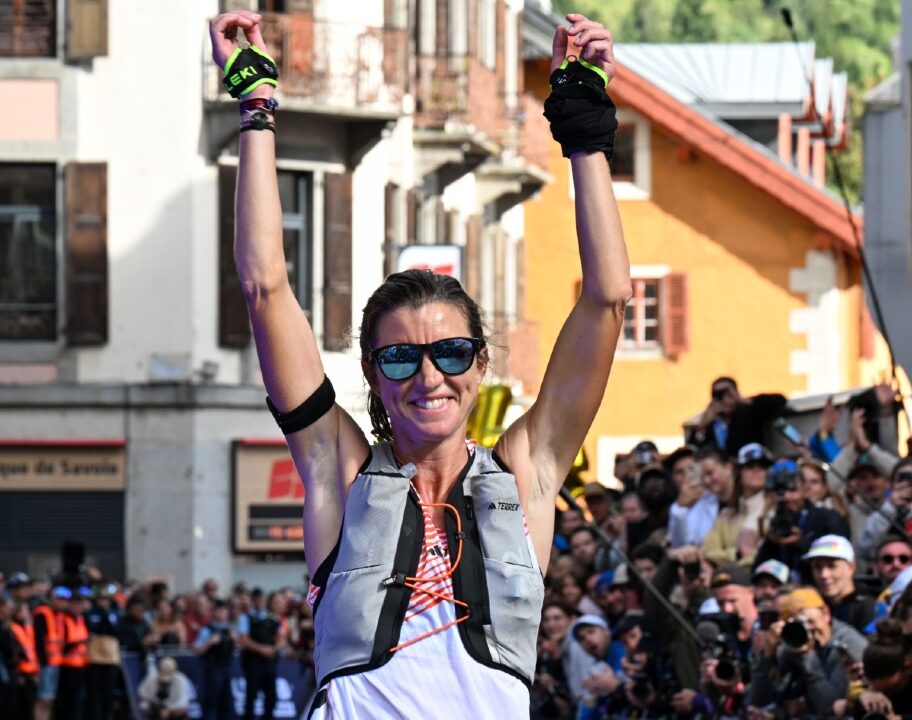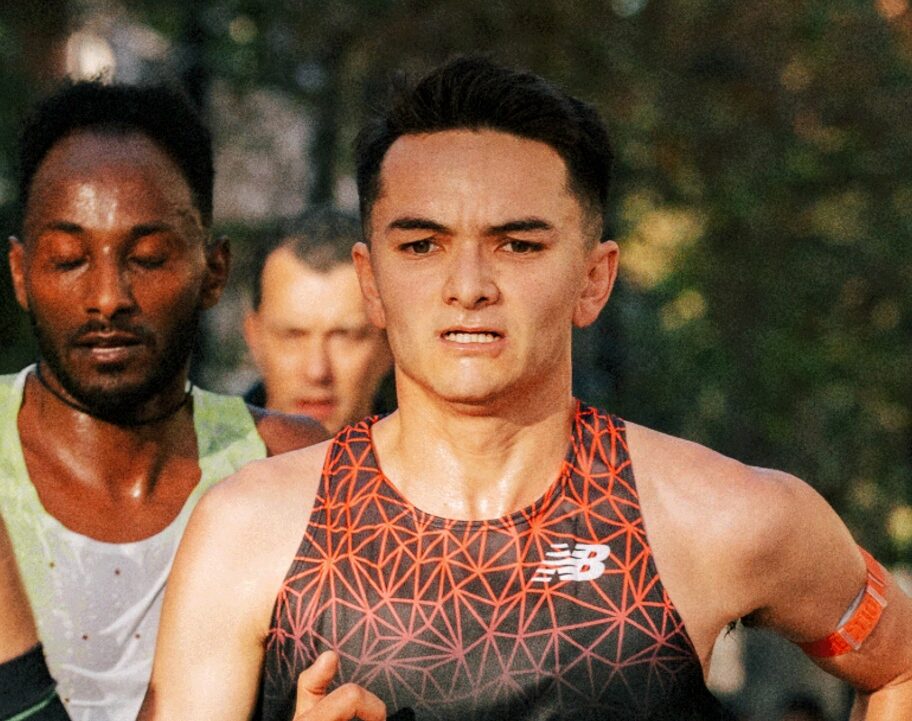The Marathon des Sables is often called the “toughest foot race on Earth”. Tasking runners with traversing the unforgiving terrain of the Sahara Desert in blistering heat, it’s part ultra-marathon, part self-sufficient adventure – and part reckoning.
Find out more about this epic Sahara Desert ultra-marathon – from how it started and why it’s so difficult, to previous winners and how you can get yourself on the start line some day.
What is the Marathon des Sables?
The Marathon des Sables (MdS) is a multi-day, multi-stage ultra marathon in Morocco. Often revered as the ‘toughest foot race on Earth’ (though some might argue that the Barkley Marathons takes that particular thorny crown), the race takes runners on an epic, approximately 252km long adventure across the Sahara Desert.

Facing extreme heat, relentless terrain and the potential for disorienting sandstorms, the MdS is a gruelling challenge. Like the Barkley Marathons, the route is kept secret each year until the runners arrive – at which point they’re given a road book with the course details. This means there’s no chance to plan or recon the route ahead of time. And it’s all about self-sufficiency. While water is rationed equally at check points and at the camps each evening. Runners are solely responsible for carrying enough food and nutrition from the moment they arrive until the end of the race. They must have a minimum of 2000 k/calories per day with them. Though as you can imagine, with >250km to run – they’ll need more than that to sustain their effort. In addition to food, runners must also carry a pack containing everything from various clothing items to mandatory sanitary and safety equipment.
The race is usually held in April each year, with the 2025 event set to take place from 4-14 April 2025.
How did the Marathon des Sables start?
The Marathon des Sables was first held in 1986. The event was founded by Patrick Bauer, after he completed a solo 12 day trek across the Sahara in 1984 and wanted to share the experience with others. That first year, just 23 competitors took part. These days, close to 900 runners choose to take part in the gruelling experience.
Course records and previous winners
As it stands, the overall record for the fastest Marathon des Sables completion time has stood since 1988 – held by Bernard Gaudin (France) who completed MdS in 14:39:44. The women’s course record is held by Béatrice Reymann (France) who set a time of 21:25:22 in 1995.
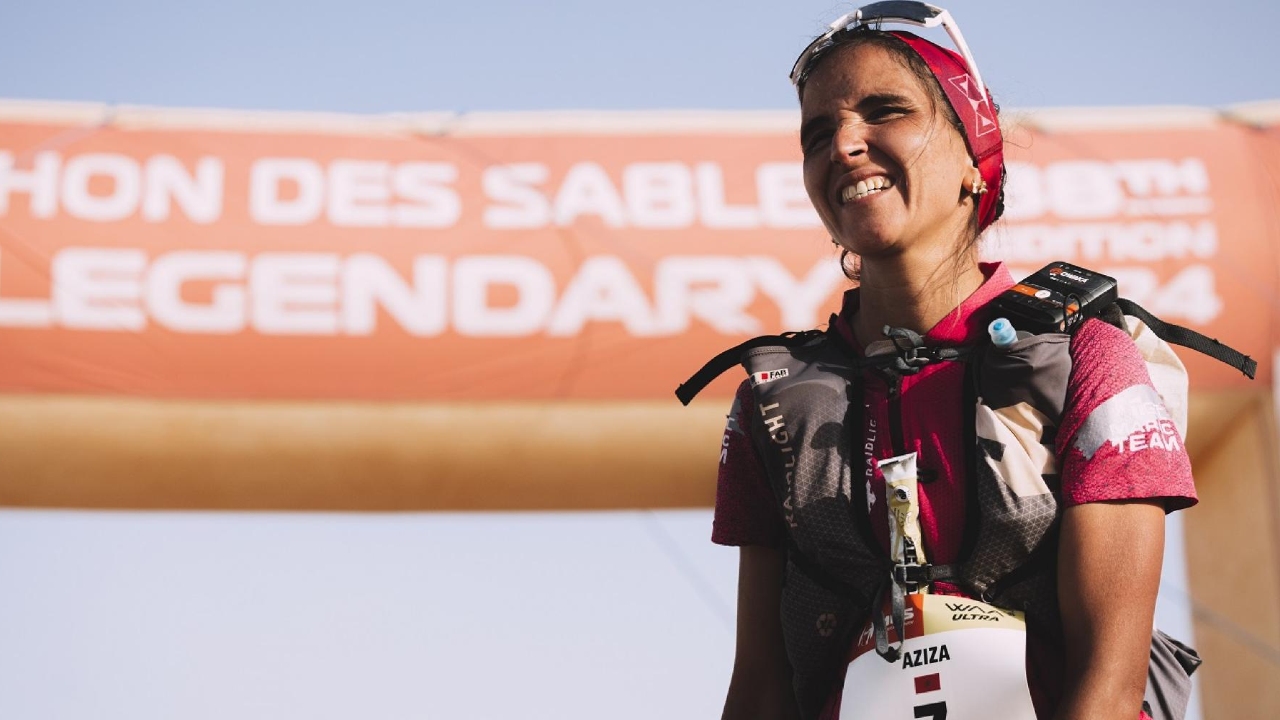
The record for the greatest number of MdS wins is a joint title held by Lachen Ahansal and Rachid El Morabity. Ahansal won the event in 1997, and then won every edition between 1999 to 2007. In 2024, Morabity became the second man to have won the ‘world’s toughest foot race’ 10 times as – after over 20 hours of running – he finished just 25 seconds ahead of his brother Mohamed.
In the women’s race, Laurence Fricotteaux-Klein (France) and Simone Kayser also hold a joint title for the most number of wins – each winning the race three times.
marathon des sables previous winners: full list
| Women | Men |
|---|---|
| Aziza El Amrany (Morocco) – 2024 | Rachid El Morabity (Morocco) – 2024 |
| Maryline Nakache (France) – 2023 | Mohamed El Morabity (Morocco) – 2023 |
| Anna Comet (Spain) – 2022 | Rachid El Morabity (Morocco) – 2014-19, 2021-22 |
| Aziza Raji (Morocco) – 2021 | Mohamad Ahansal (Morocco) – 2013 |
| Ragna Debats (Netherlands) – 2019 | Salameh Al Aqra (Jordan) – 2012 |
| Magdalena Boulet (USA) – 2018 | Rachid El Morabity (Morocco) – 2011 |
| Elisabet Barnes (Sweden) – 2017 | Mohamad Ahansal (Morocco) – 2008-10 |
| Natalia Sedykh (Russia) – 2016 | Lahcen Ahansal (Morocco) – 1999-2007 |
| Elisabet Barnes (Sweden) – 2015 | Mohamad Ahansal (Morocco) – 1998 |
| Nikki Kimball (USA) – 2014 | Lahcen Ahansal (Morocco) – 1997 |
| Meghan Hicks (USA) – 2013 | André Derksen (Russia) – 1994-96 |
| Laurence Fricotteaux-Klein (France) – 2011-12 | Mohamed Bensalah (Morocco) – 1992-93 |
| Mònica Aguilera Viladomiu (Spain) – 2010 | Hassan Sebtaoui (France) – 1989-91 |
| Touda Didi (Morocco) – 2008-9 | Bernard Gaudin (France) – 1988 |
| Laurence Fricotteaux-Klein (France) – 2007 | Hassan Sebtaoui (France) – 1987 |
| Géraldine Courdesse (France) – 2006 | Bernard Gaudin (France) – 1986 |
| Simone Kayser (Luxembourg) – 2004-5 | |
| Magali Juvenal (France) – 2003 | |
| Simone Kayser (Luxembourg) – 2002 | |
| Franca Fiacconi (Italy) – 2001 | |
| Pascal Martin (France) – 2000 | |
| Lisa Smith (USA) -1999 | |
| Rossana Pellizzari (Italy) – 1997-98 | |
| Anke Molkenthin (Germany) – 1996 | |
| Béatrice Reymann (France) – 1995 | |
| Valentina Liakhova (Russia) – 1994 | |
| Irina Petrova (Russia) – 1993 | |
| Moniqúe Frussote (France) – 1991-92 | |
| Claire Garnier (France) – 1990 | |
| Claude Battistelli (France) 1989 | |
| Marie-Ange Malcuit (France) – 1987-88 | |
| Christiane Plumere (France) – 1986 |
How hard is the Marathon des Sables?
The ultra-running scene inherently has its fair share of incredibly difficult events. From the icy grip of the Winter Spine Race, to the total sensory deprivation of the notorious The Tunnel 200-mile ultra and of course, the dastardly madness of the Barkley Marathons.
But the Marathon des Sables certainly deserves it’s place in the toughest ultra event hall of fame. First up you’ve got the terrain. The Sahara Desert isn’t exactly renowned for being comfortable, hospitable environment. The sand can be whipped up into disorienting storms by 50+ mile per hour winds.
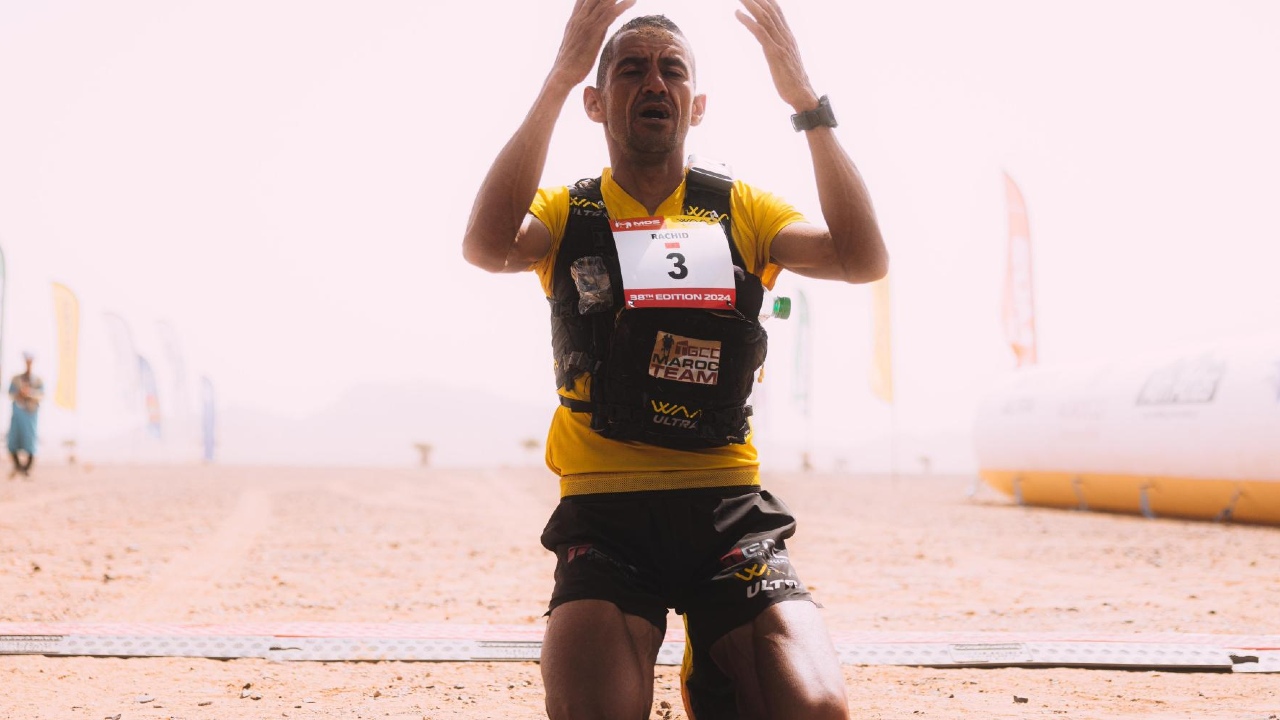
And it’s not just the visibility that can be an issue. The sand can also cause runners all sorts of issues with chafing, quite literally turning their own skin and clothing into sandpaper which can leave them rubbed raw left unchecked. Then of course you’ve got the blistering heat, which can get up above 50 degrees Celsius as the sun beats down.
There’s also the self-sufficiency element. Runners have to carry enough food to sustain them for the entire trip, alongside cooking equipment. There’ll be no arriving at camp to be greeted by a support crew proffering fresh clothes and pre-cooked meals.
Finally, in a trait the MdS shares with the Barkley Marathons. The route is kept secret until the runners arrive, at which point they’re handed a road book. That means no chance to recon or mentally rehearse.
How to enter the Marathon des Sables
If, for some inexplicable reason, all that has got you searching for the ‘enter now’ button. You’ll be glad to know that anyone who’s willing to suffer (and pay for the privilege) can enter the Marathon des Sables. So far, over 30,000 people have started the event. The full experience – now called Marathon des Sables Legendary – features 6 stages over 11 days to cover the >250km distance. But there are now shorter options including a 4 day 70, 90, or 120km MDS. Or the MDS Trek which does not require self-sufficiency.
Registration takes place on the Marathon des Sables website. It’s worth knowing that you’ll be required to present a medical certificate and an original echocardiogram taken less than 30 days before the race when you arrive on site.
How much does it cost to do the full Marathon des Sables?
The exact cost of the MDS Legendary varies, but you can expect to pay around €4000 per person. This includes your race entry, accommodation in a hotel prior to starting the race, bivouac (camping) accommodation during the race and all the organisation/medical assistance and water supplies.
When is the 2025 Marathon des Sables?
The 2025 edition of the Marathon des Sables is set to take place from 4 – 14 April. Stayed tuned as we’ll soon be releasing our full race preview, and as ever – we’ll keep you updated as the race itself unfolds.
FAQs
The ‘full’ Marathon des Sables (known as the MdS Legendary) is typically around 252km long.
The fastest overall finish time is held by Bernard Gaudin (France) who completed MdS in 14:39:44 in 1988. The women’s record is held by Béatrice Reymann (France) who set a time of 21:25:22 in 1995.
Pretty tough, even by ultra running standards! The blistering heat, skin-savaging sand and the self-sufficient nature of the race means many refer to it as the ‘toughest foot race on Earth.’
In theory, yes! Just shy of 900 runners started the race in 2024. Anyone can enter, though you will have to present a medical certificate and an ECG to show you are physically fit and well enough to take on the challenge.

